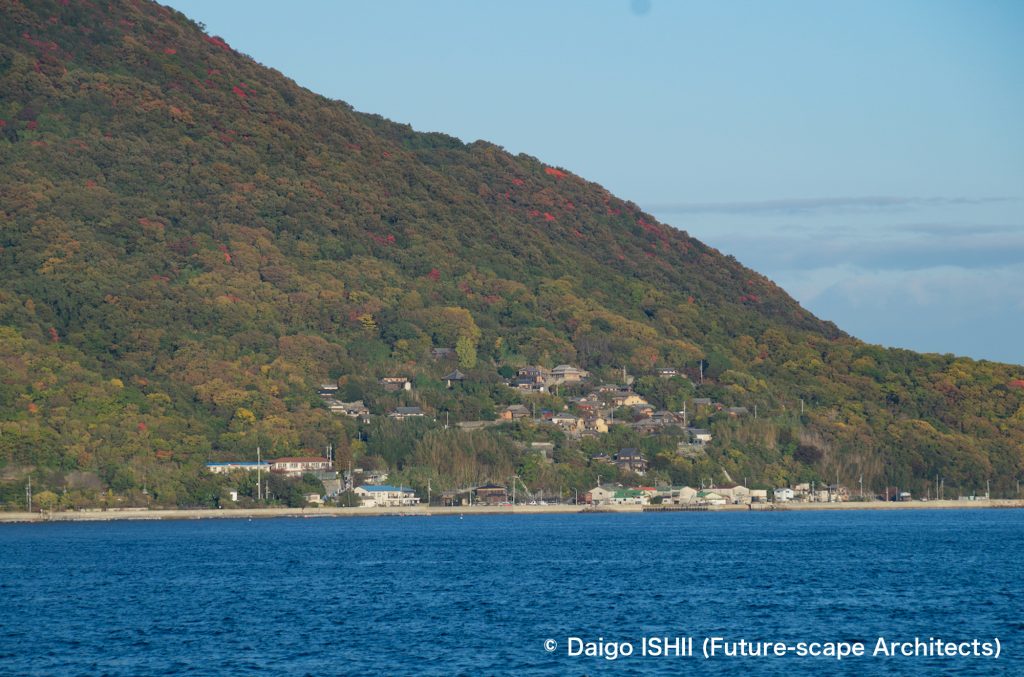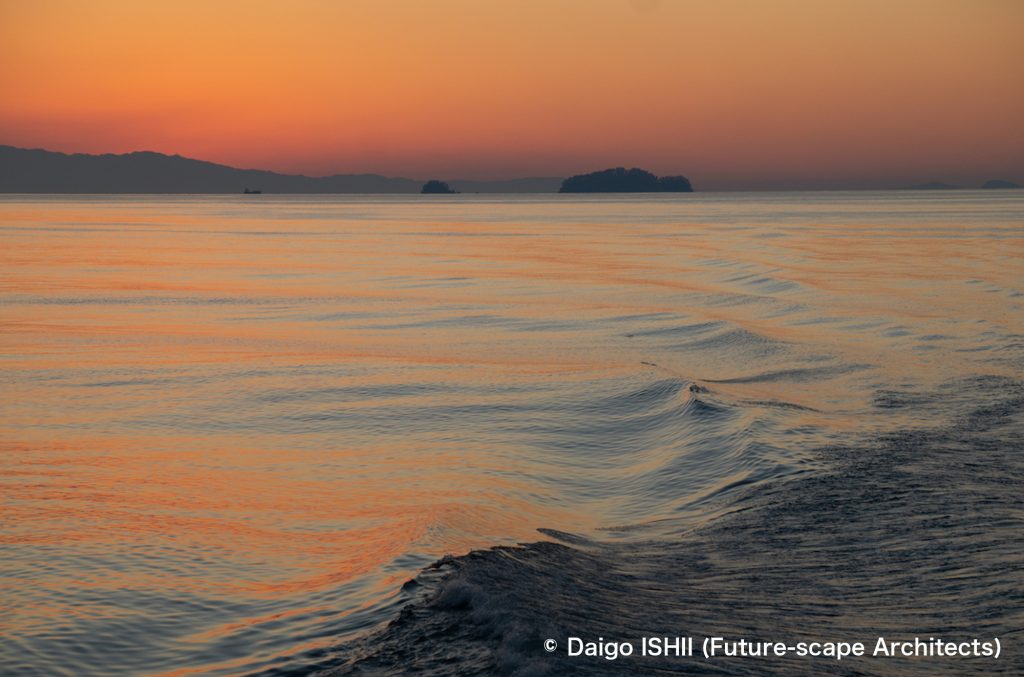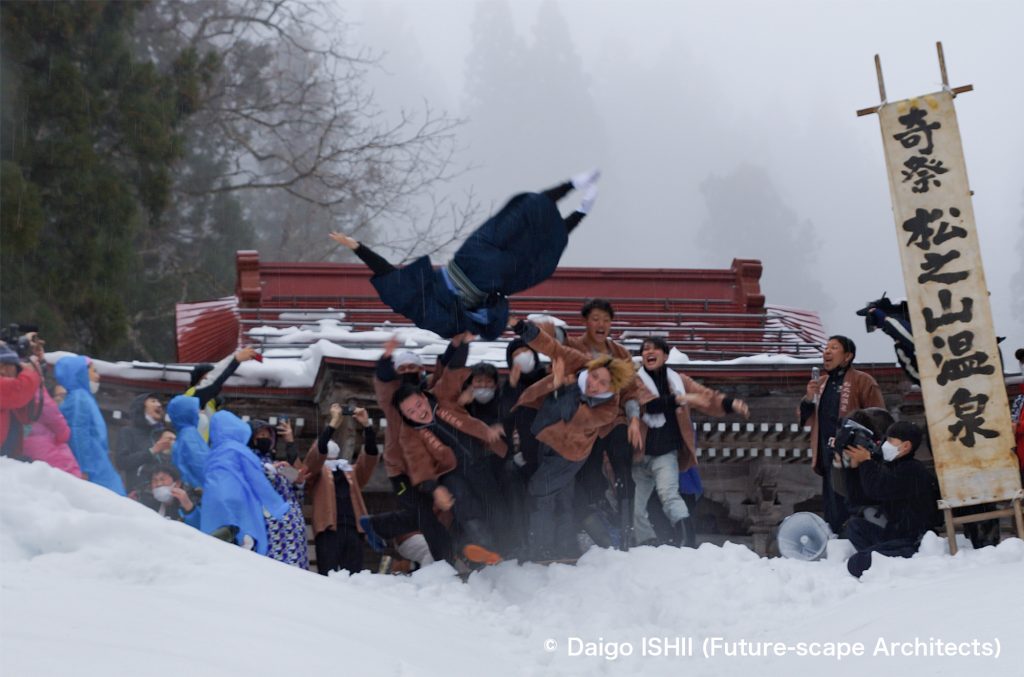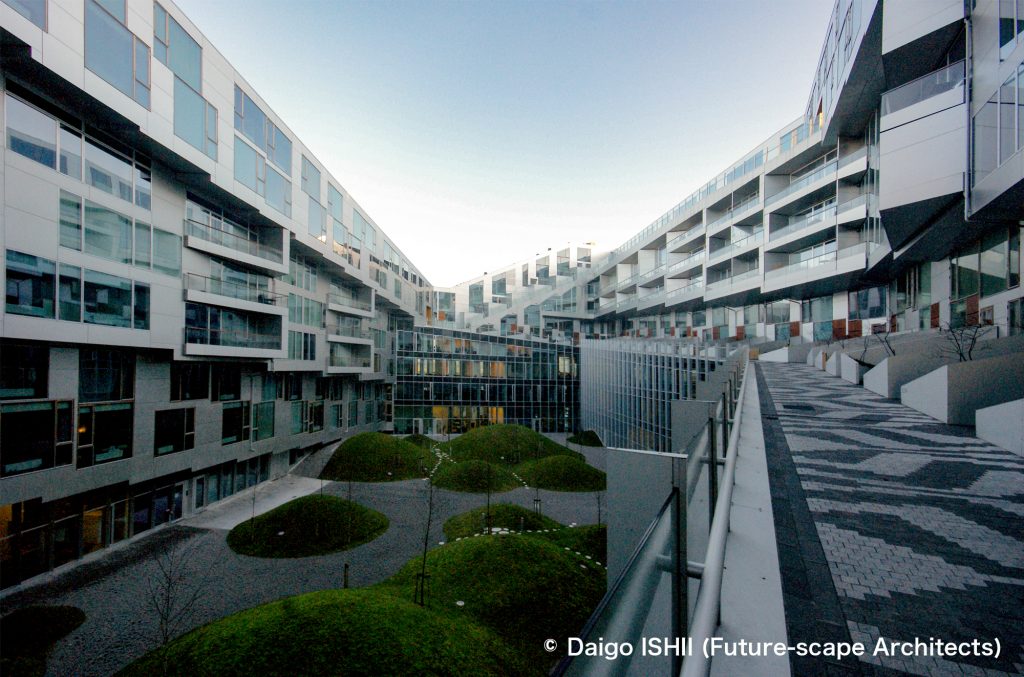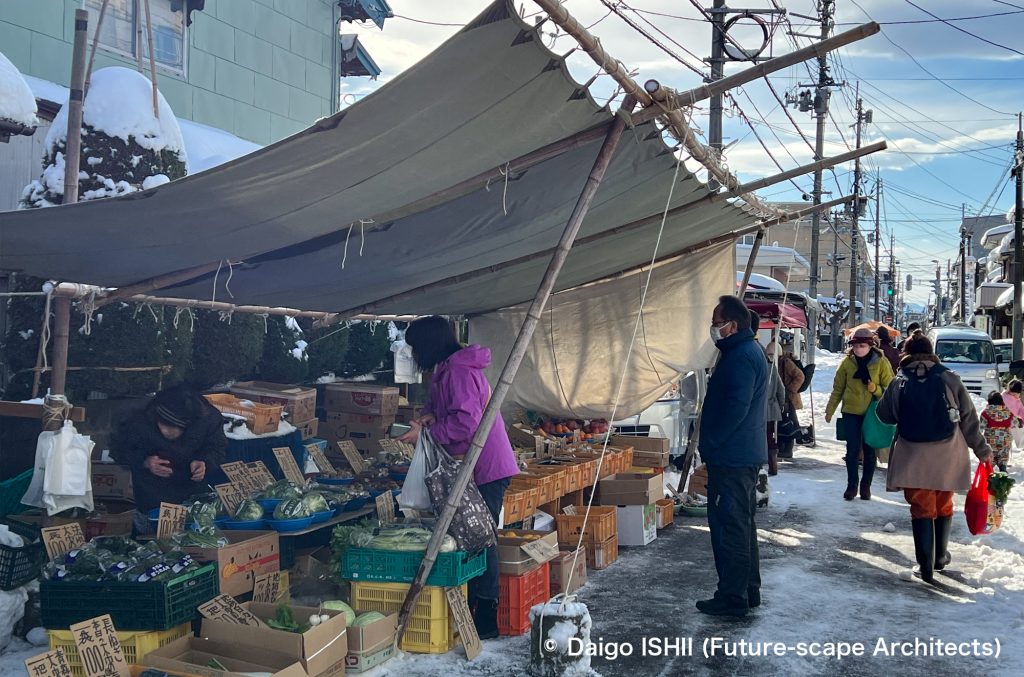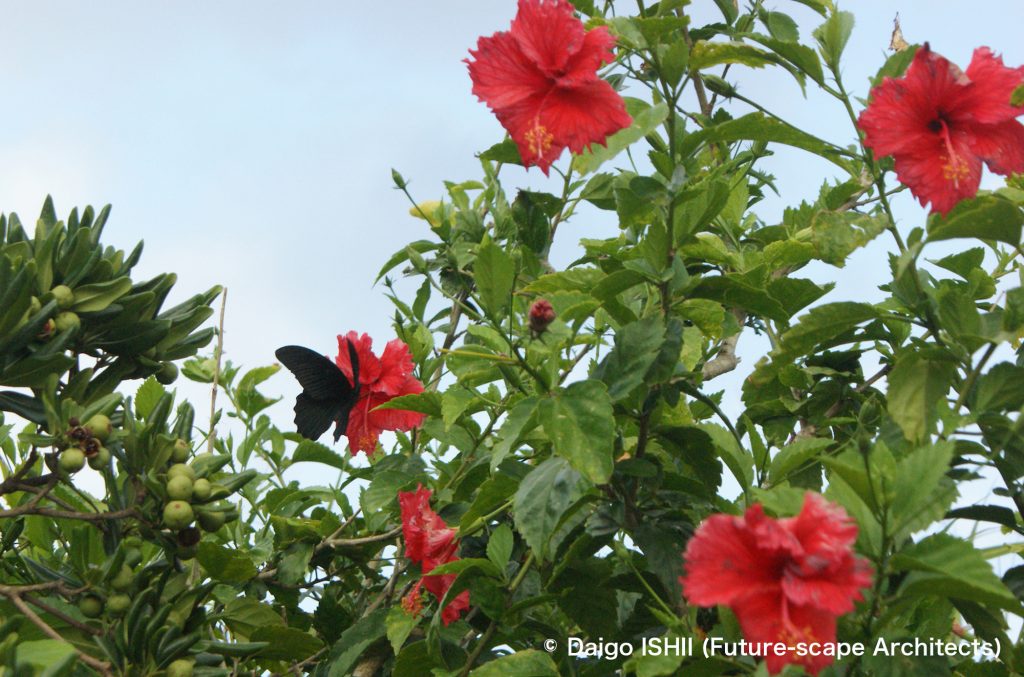瀬戸内国際芸術祭も、5回目、12年目となると、ボランティアと仕事の関係、生業と新ビジネスの関係もどう変わって行くのでしょうか。
As Art Setouchi enters its 5th and 12th year, how would the relationships between volunteers and work, and between livelihoods and new businesses change?
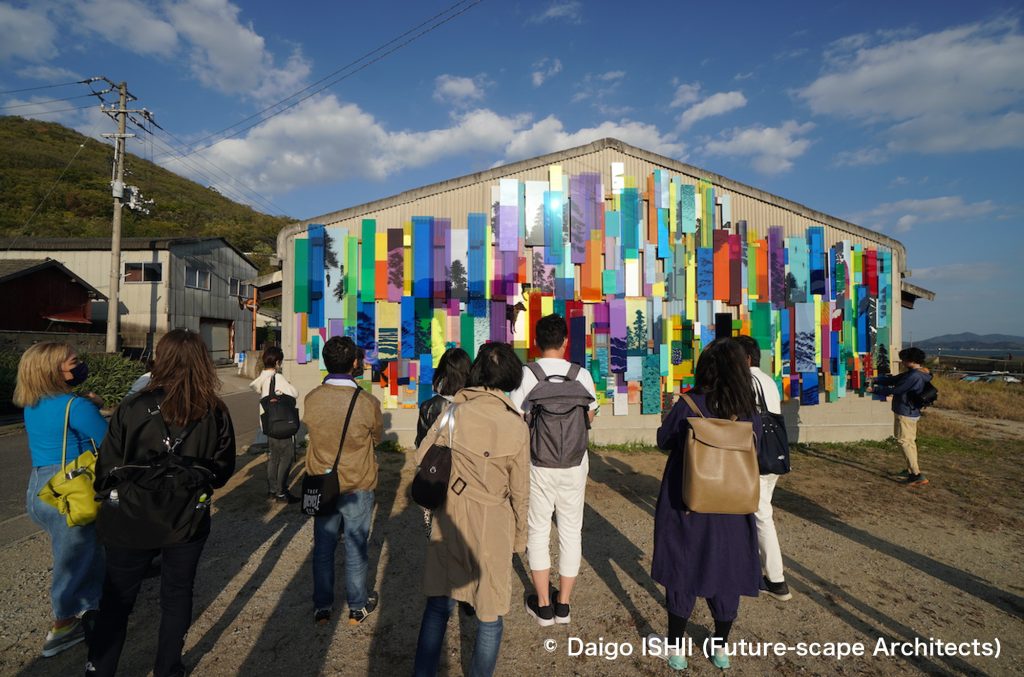
See the art tour by a volunteer, who explains on Rikuji Makabe's artwork, in Ogijima island.
https://goo.gl/maps/GDueASB5m1Nz7onp8
ボランティアと仕事の境界はどこか?。多くの芸術祭で、目玉アーティスト以外は、参加の名誉と引き換えに、ボランティア的フィーでの製作が常だし、会期中の現場運営を支えるのもたくさんのボランティア。最初はともかく、2019年に100万人、200億円の経済効果まで育った瀬戸芸でさえ、ボランティア的仕事の比重が大きいのがもやもやするところ。県が経済効果に見合う事業費を出さず、運営母体が社会的プロジェクトに奉仕は付き物と考え、そして、弱い立場と芸術祭の発信効果から、アーティストが安いフィーを受け入れることが理由でしょうが、芸術祭をきちんとしたビジネスにする時期になったように見えました。
そして、生業と新ビジネスの関係。高松と船で直結した東の島々では、この12年で、小さな観光系ビジネスが育っていました。いちばん変化を感じるのは男木島で、2022年現在、人口170人の島に食堂とカフェが10軒。閑散期は週末営業も多いですが、17人に1軒は、多分、人口あたりの飲食店数日本一。新ビジネスを主に担う外からの移住者やUターン組に対して、昔からの島民が携わる漁業や農業という生業は衰退。島の生活や集落の形は生業が決めたものだから、環境負荷の少ない観光とは言え、生業が抜けて観光にシフトし、民家すべてがカフェやゲストハウスになる風景は避けたい。次の段階は、観光が、島のアイデンティティーである生業のイノベーションに関わることと見ました。
高松からの交通の不便さ故、新ビジネスも生業も活発ではない西の島々、その例外が伊吹島で、日本で最高級のイリコの生産により、島全体で年間10億円程稼ぎます。それ故、不安感は弱く、漁業関係者の芸術祭への関心は低いのですが、実は、漁獲量も人口も減り、ここも将来へのイノベーションが急務で、芸術祭や観光と結び付くと、新しい視点が切り拓けそうな感じもします。その伊吹島で、友人の島民が始めたのが、島の特産品だった白イモ栽培を復活させ、菓子をつくること。芸術祭をきっかけとした生業再生の小さな一歩。
Where is the line between volunteering and work? At many art festivals, artists produce artwork on a volunteer-like fee in exchange for the honor of participating, except for the special-feature artists, and many volunteers support the on-site operations. Even the Art Setouchi, which has grown to an economic effect of 1 million tourists and 20 billion Japanese yen for 12 years from the first festival, depends on much volunteer-like work. The prefectural government doesn't provide project expenses that match the economic effect, the operating body thinks that the festival is a social service project, and artists accept cheap fees due to their weak status and the art festival's dissemination effect. Now it is time to turn the art festival into a proper business.
And the relationship between traditional livelihood and new business. In the past 12 years, small new tourism businesses have grown in the islands in the eastern area of the festival near the prefecture capital, Takamatsu. Ogijima island is the place with the most change, where as of 2022 there are 10 restaurants and cafes for a population of 170. The island probably has the most restaurants per capita in Japan. Those new businesses are mainly carried out by immigrants and U-turners, meanwhile, the traditional livelihoods of the islanders, such as fishing and agriculture, are declining. The life and landscape of the island were formed by their livelihoods. I wish to avoid the situation where people leave their livelihoods and shift to tourism, and all private houses become cafes or guesthouses. The next step would be that tourism contributes to the innovation of livelihood as the island's identity.
Due to the inconvenience of transportation from Takamatsu, new busines and livelihoods are not active on the islands in the western area. The exception is Ibukijima island, which earns about 1 billion Japanese yen a year from the production of Japan's finest dried anchovies. Therefore, those concerned with the fishing industry have little interest in the art festival. However, the catch and population are declining, so innovation for the future should be urgent. Then, the connection with art festivals and tourism must open up a new perspective. My friend's islanders started to re-cultivate a white potato that was a specialty, and make sweets. It is a small step in revitalizing the livelihood triggered by the art festival.
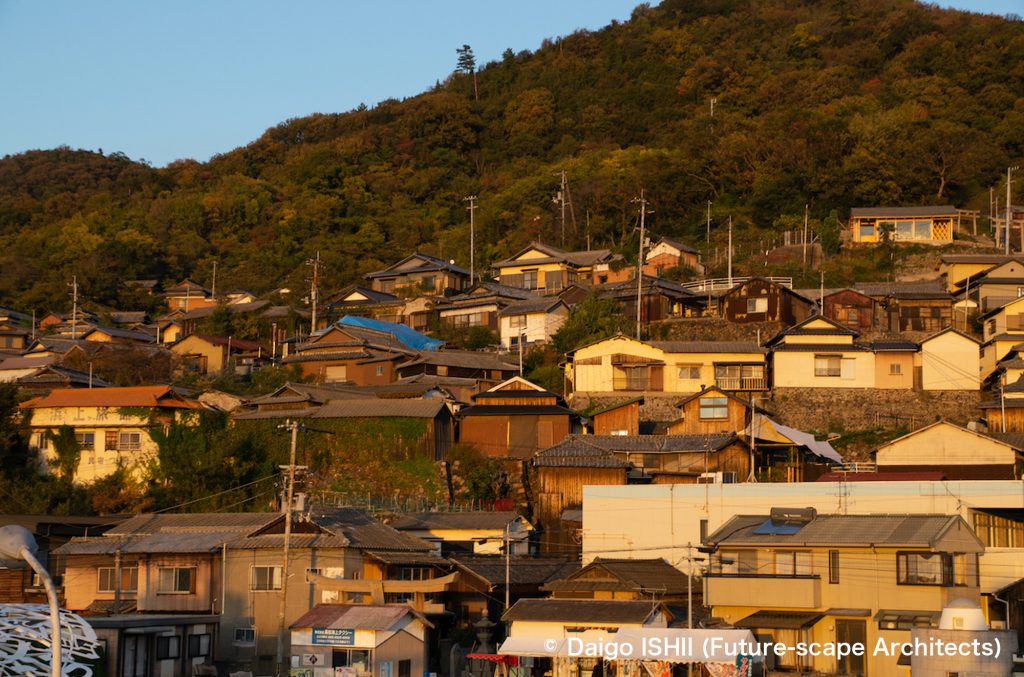
See the village of Ogijima island.
https://goo.gl/maps/S22AvJciUpXYM8428
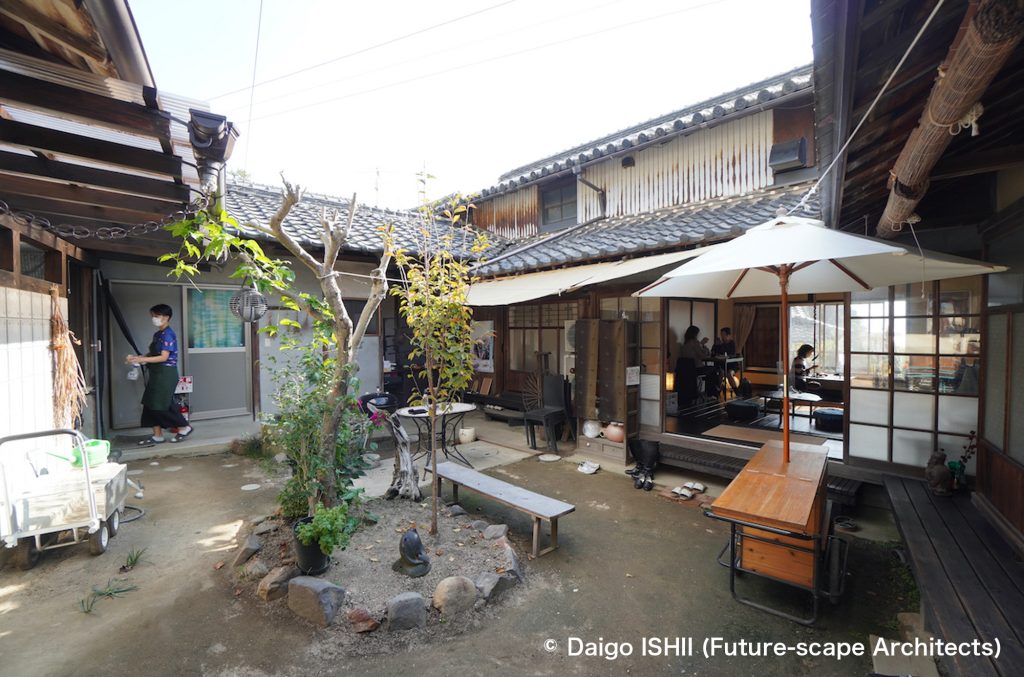
“Yukuru” on Ogijima island is a restaurant which renovated an old private house. It has a spacious place surrounding the courtyard.
https://goo.gl/maps/QjtuFH6RGbk5BEc59
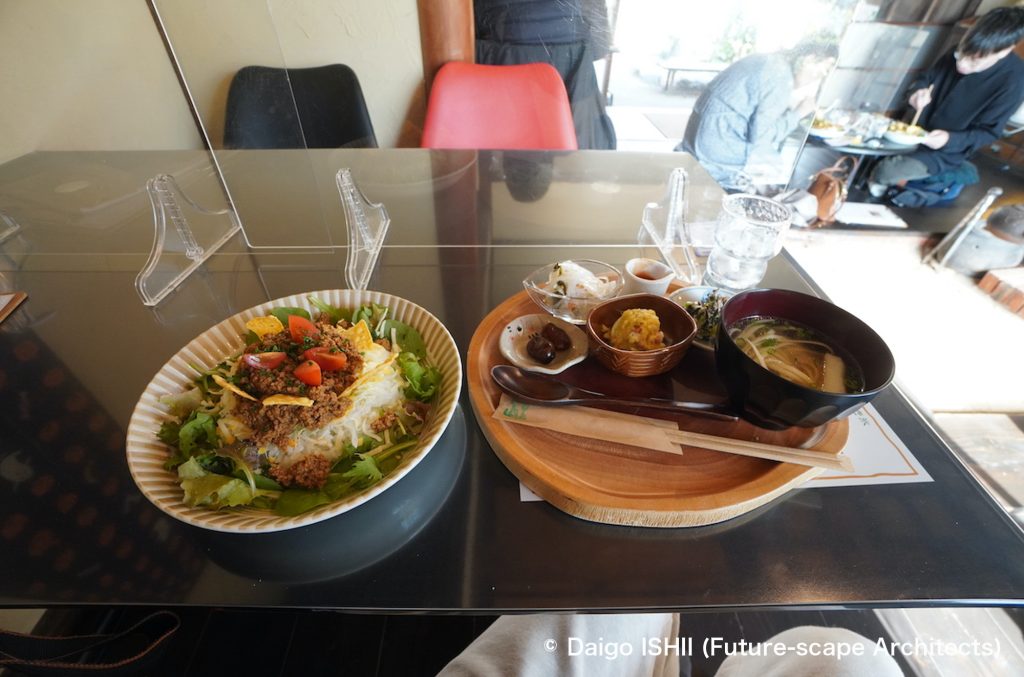
“Yukuru” on Ogijima island served the lunch with dishes from the world's islands, such as Gabao from the Philippines and Okinawan cuisine.
https://goo.gl/maps/QjtuFH6RGbk5BEc59
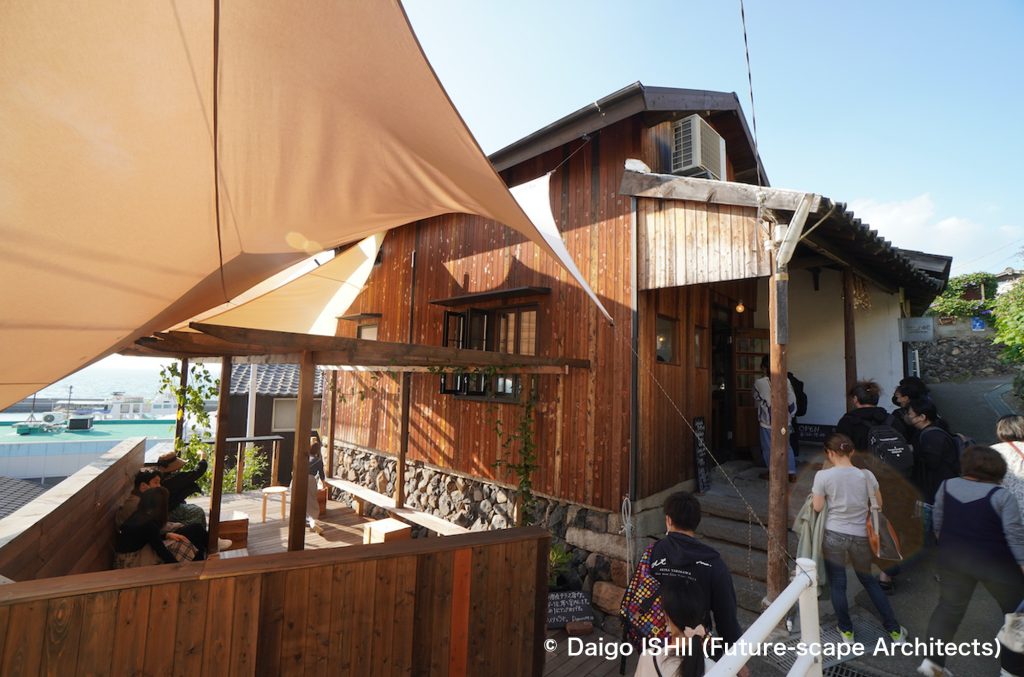
A sandwich shop on Ogijima island had long queues. I wanted to experience what a sandwich shop on a remote island was like, but I gave up on the long wait.
https://goo.gl/maps/QjtuFH6RGbk5BEc59
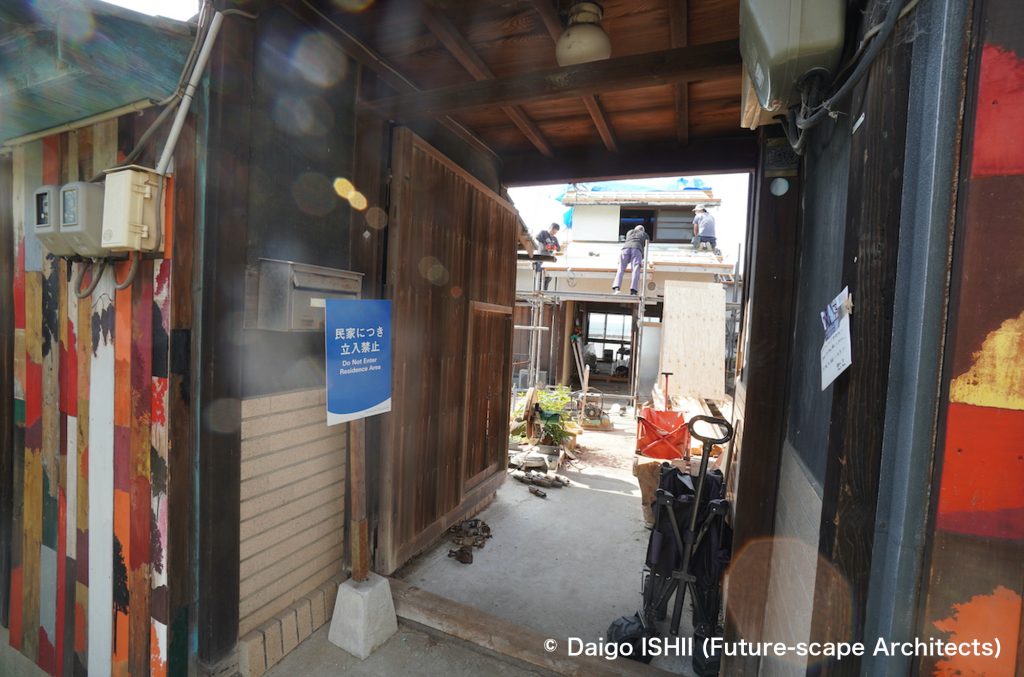
See a private house under renovation on Ogijima island. Triggered by the art festival, a new business was born, which led to the construction work of houses and shops.
https://goo.gl/maps/S22AvJciUpXYM8428
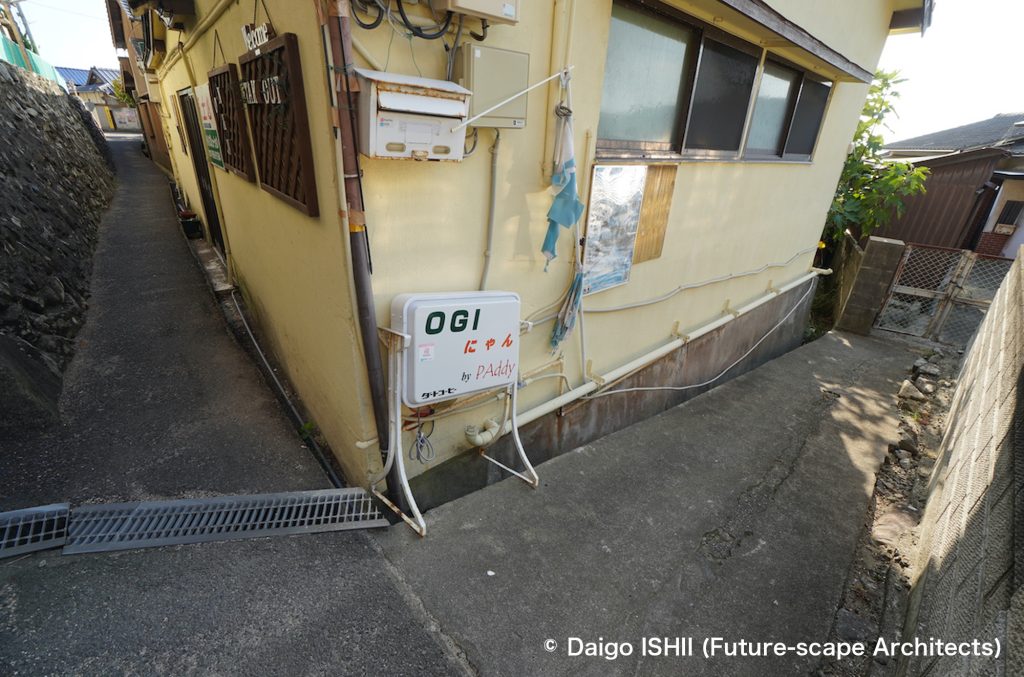
The cafe on Ogijima island where I had a lunch in 2016 was for sale. The key to success is finding a good old house with a spacious space and an attractive landscape, and serving delicious meals.
https://goo.gl/maps/S22AvJciUpXYM8428
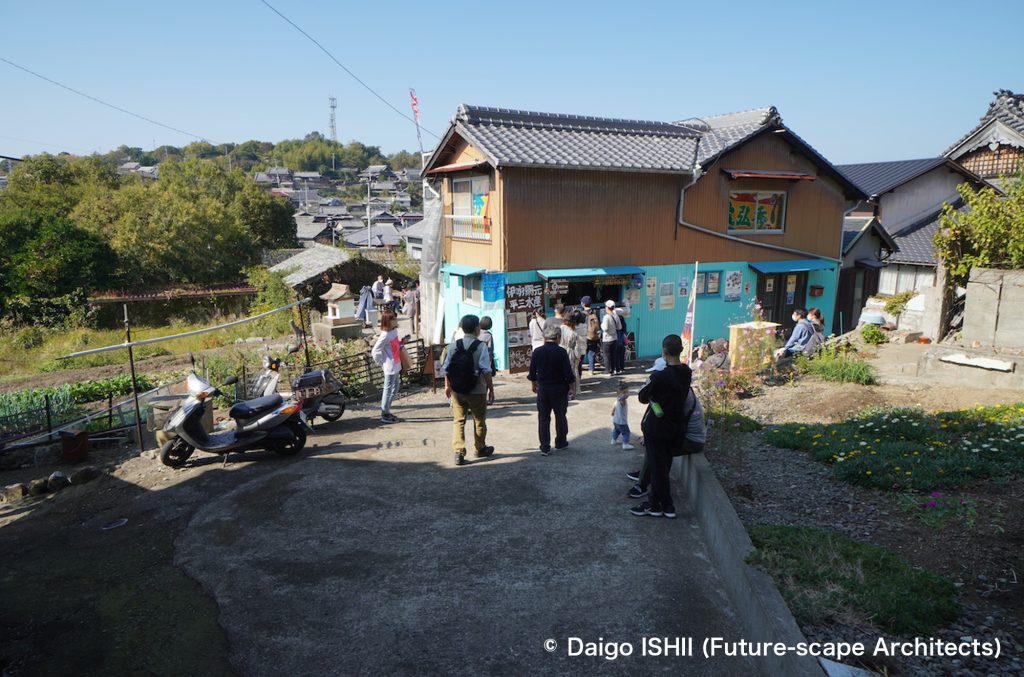
In 2016, many cafes were opened on Ibukijima island during the festival, but in 2022, the enthusiasm for new businesses was weakening, probably because of the corona disaster. A café, which opened near the highest point on the island, has gathered a large number of tourists.
https://goo.gl/maps/zFRuzSiWtSeKue3e7
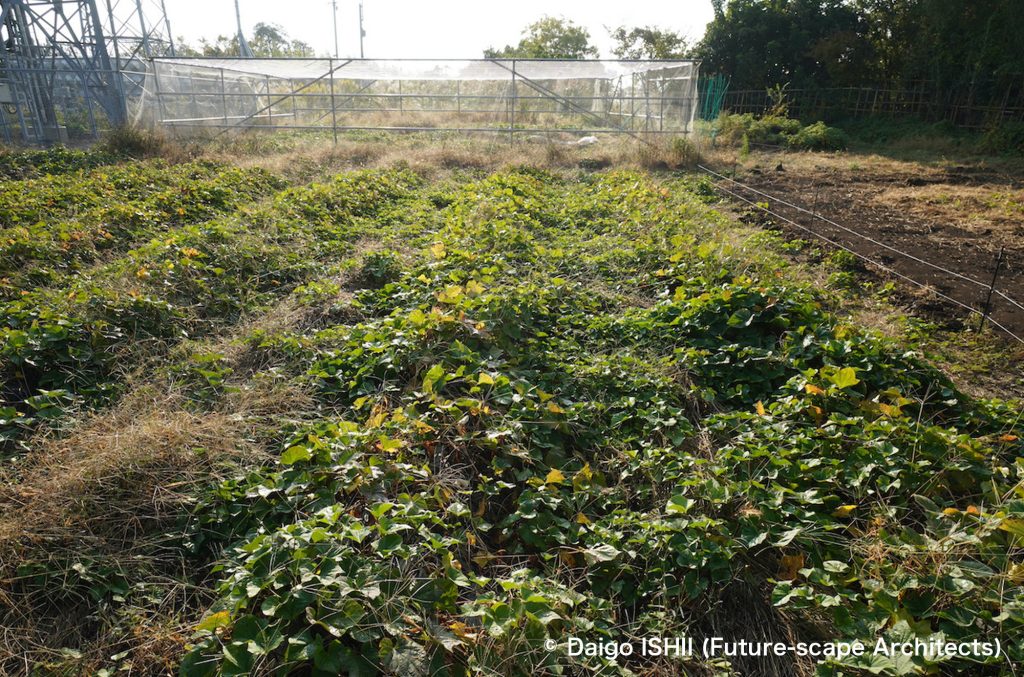
See a field in which islanders re-cultivated the cultivation a white sweet potato (Ibuki white) as a specialty of Ibukijima island. It was surrounded by electric grids that keep out wild boars that have recently arrived across the sea.
https://goo.gl/maps/KkuxgFynsfX6UTGS9

In Ibukijima island, islanders have re-cultivated a white sweet potato (Ibuki white) as a specialty of the island. The pudding produced from the Ibuki White is a sweet with not too sweet but refined taste.
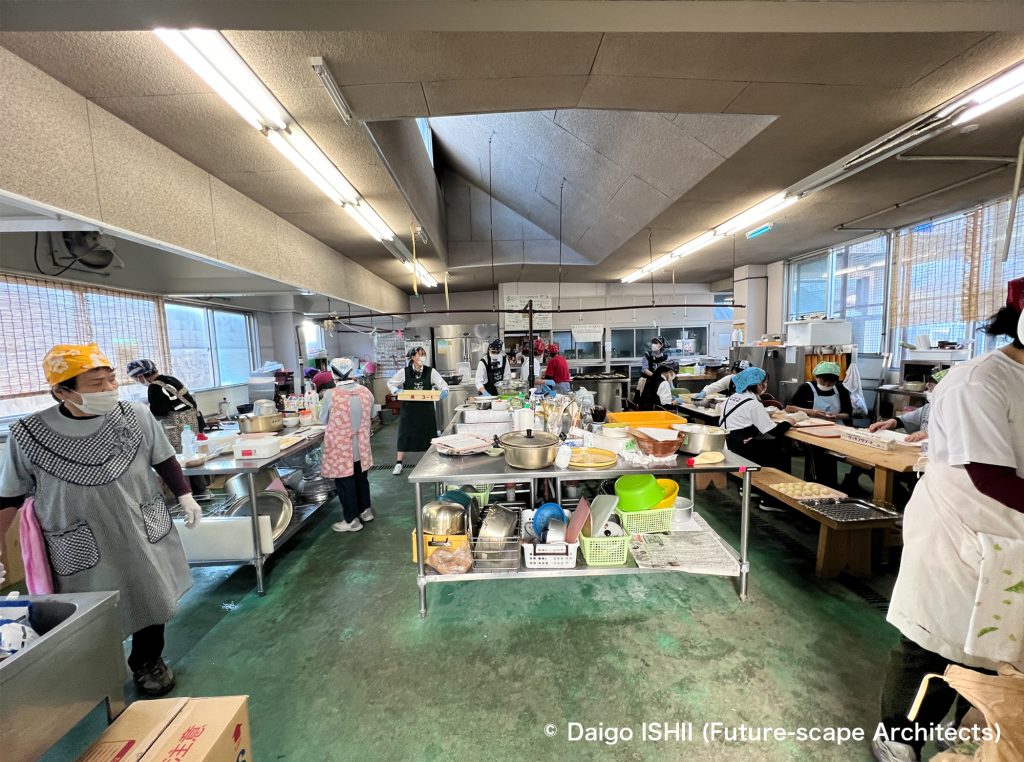
Since 2016, the art festival produced a special lunch box on Ibukijima island. The first time in 2016, based on the menu by a chef from the main land, the woman islanders cooked and sold it for 2,000 yen. When I knew their hourly wages, I was surprised that they worked for unbelievable low wages like a volunteer. In 2022, though the lunch box price as become reasonable at 1200 yen, the woman islanders received a legal minimum hourly wage. It's becoming a proper business.
https://goo.gl/maps/HBJhsscjTYyQusSH6

See the Our Ibukijima island lunch box” planned by the art festival. Through traditional island cuisine, the memory on food on the island was recreated.
https://goo.gl/maps/HBJhsscjTYyQusSH6
ご感想はこちらへ / Click here for your impressions
男木島 / Ogijima island
伊吹島 / Ibukijima island
参考文献 / reference
瀬戸内国際芸術祭2022公式ガイドブック アートと島を巡る旅(北川フラム/瀬戸内国際芸術祭実行委員会,現代企画室,2022)
写真の無断使用、転用はご遠慮下さい。/ Please do not use or upload our photos without permission.




